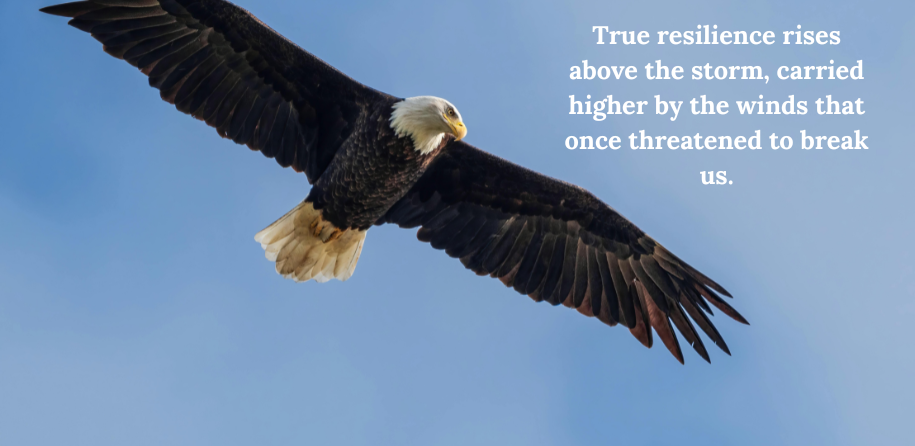Rising Stronger: Redefining Resilience in Leadership
Once resilience meant toughness—brushing yourself off and never letting them see you sweat. Today, resilience is about adaptability, courage, and optimism in the face of uncertainty. Paired with grit—anchored not in grinding but in purpose—it becomes a quiet superpower that transforms hardship into strength, empathy, and wisdom.
9/30/20252 min read


Coming off a recent symposium through my role as Vice President of Marketing & Communications for a global women’s organization, the theme was Resiliency Re-Imagined. We heard from so many incredible speakers—women professionals from the Banking and Fintech industries. I was deeply impressed by the keynotes and the many perspectives shared on what it truly means to be resilient in both business and life.
When I think back to what resilience meant in my youth, the definition was very different. Growing up, resilience meant being tough. My parents would say, “You have to toughen up when things get hard.” It was about wiping yourself off when you fell down, or when life treated you badly. Resilience was tied to stoicism, bouncing back quickly, and “never letting them see you sweat.”
But the challenges of our time have shifted. Leaders and individuals alike are navigating constant change, uncertainty, and pressures that don’t always have clear solutions: global instability, digital disruption, climate crises, and the complexities of balancing career with mental health, family, and identity.
Resilience today, especially in business, is about adaptability and flexibility. Both are strengths I lean into. To me, resilience is not just rolling with the punches or conceding for the sake of harmony. It is the ability to pivot—even when you don’t always agree, to find common ground even when you think you are right, and to remain optimistic along the way. The optimism is key: the belief that something will work out, even in times of uncertainty, or when things are turned upside down. Yes, resilience is still about getting up and brushing yourself off, but it’s also about acknowledging there may be another path forward.
In this landscape, resilience is less about suppressing the struggle and more about embracing it with courage and adaptability. It’s about naming when things are hard, asking for help, and still finding the capacity to move forward. Resilient leaders create space for vulnerability—not as weakness, but as fertile ground where growth takes root.
And grit? That’s another word we often hear. To have grit once meant you were determined and never gave up, no matter the cost. But grit today is no longer simply about grinding it out. Modern grit is fueled by purpose. It is the steady discipline of returning, again and again, to what matters most—your values, your vision, your commitment to serve—even when the path feels exhausting or unclear. Grit now requires emotional intelligence, not just toughness. It asks us to balance perseverance with compassion, persistence with wisdom.
In this day and age, resilience and grit together form a quiet kind of superpower. Not the loud, forceful determination of the past, but the grounded, steady presence of a leader who endures storms without losing sight of the horizon. This is the kind of grit that inspires others, because it doesn’t just survive hardship—it transforms it into strength, empathy, and deeper resolve.
So how do we incorporate more resilience and grit into our lives today? Three things:
Pause and Reframe: When challenges arise, take a breath. Ask not “Why me?” but “What can this teach me?”
Lean on Others: Resilience is not a solo endeavor. Invite support, wisdom, and encouragement into your journey.
Return to Purpose: Keep anchoring yourself in what matters most—your values, your vision, your faith. Purpose fuels the grit to keep going.
Because in the end, resilience and grit are not about being unshakable. They are about being rooted—strong enough to bend, steady enough to endure, and wise enough to grow through whatever comes your way.
